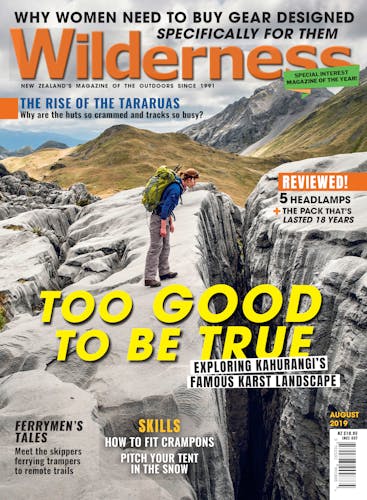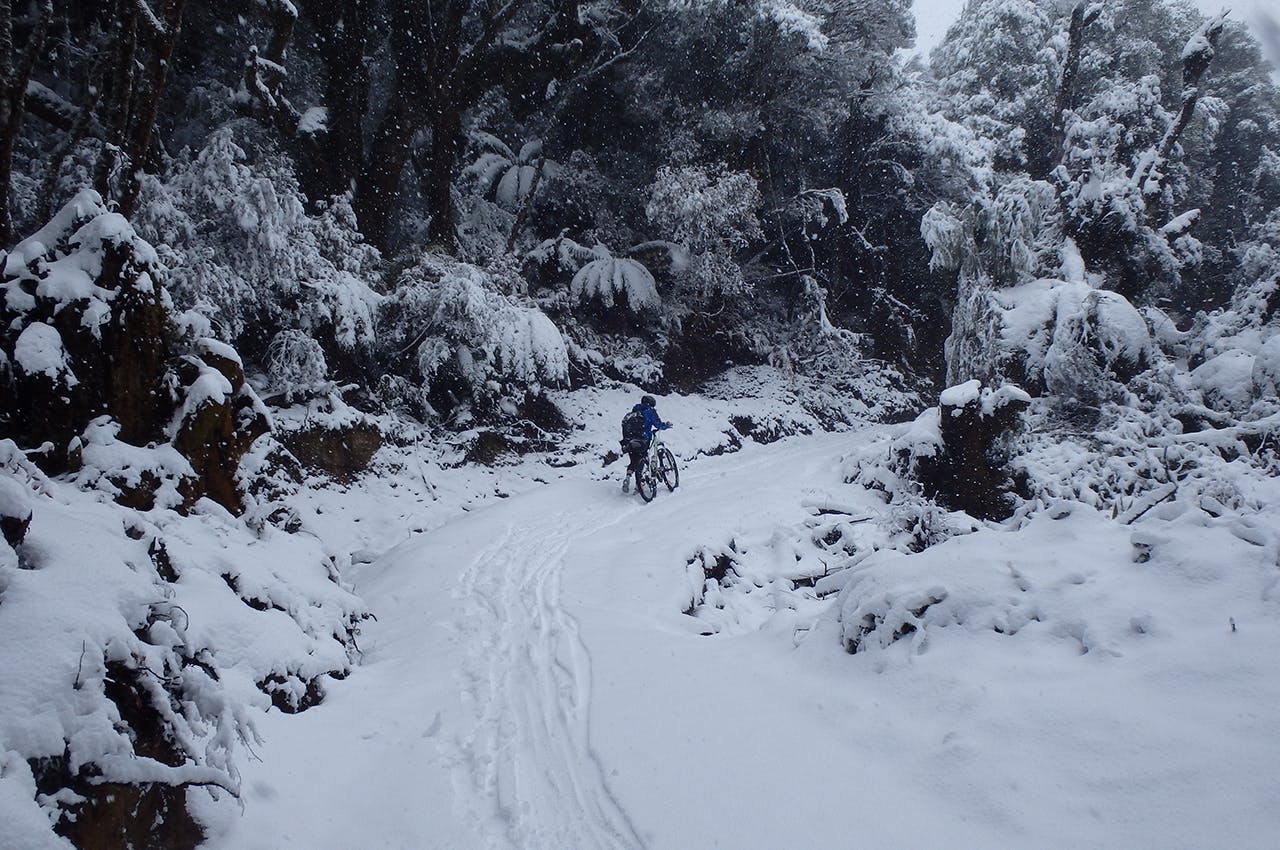Letter of the month
Hypothermia never far away
Two articles in the June issue – one about the Timber Trail cycle trail which was billed as an ‘all-weather track’ and the other about hypothermia reminded me of a Manukau Tramping Club ride of the Timber Trail a few years ago.
As we began the ride, clouds were gathering and at the 10km mark, it started to snow. We thought we were well-equipped with gloves and coats and decided to carry on. The snow became heavier and heavier. Our muscles produced plenty of heat as we climbed towards the top of the ridge. Fat mountain bike tyres go well over fresh snow and the snow made a soft cushion to fall in when we took a tumble.
Once we started to come down the other side, the snow turned to sleet and then rain and with the faster downhill speed, the wind chill increased and my feet and hands started to freeze. The only way to get the feeling back was to get off my bike and run on the downhill sections.
An all-season track, yes, but the weather can turn unexpectedly and the risk of hypothermia can be just around the corner.
– Tony Gibson, email
– Tony receives a Macpac Rhyolite 47-litre pack worth $299.99 from macpac.co.nz. Readers, send your letter to editor@lifestylepublishing.co.nz for a chance to win.
Wet cotton and hot bodies
I found the article ‘Hypothermia – the silent menace’ interesting. The danger of hypothermia and its relationship to different types of clothing is certainly something important, and something I take heed of.
That said, a modicum of editorial realism should have been exercised. The statement as to how dangerous cotton can be: ‘it can absorb up to 2700 per cent of its own weight in moisture’, seemed unlikely.
I weighed a dry cotton T-shirt – 219g. According to your figures, when wet it should weigh around 5.9kg. But after fully saturating the shirt, it weighed 936g. That’s a long way off the 2700 per cent increase in weight.
Second, the quoted text stating that calculations have shown you would need 300 bodies in a sleeping bag to rewarm a hypothermic person is intuitively questionable given how warm one gets cuddled up to another person. I understand a person puts out thermal energy around 100 watts. Perhaps not enough to warm a hypothermic person. However, if you multiply that single person’s energy by 300, you end up with a number that is more indicative of a fire hazard warning, than a lack of heat.
– Tom Perkins
– Nice experiment, Tom! We do say ‘up to’ so it’s safe to say that is a worst-case scenario. Regardless of how much water a particular cotton item may absorb, it’s drying time will be much slower than non-cotton items – and this is the real issue. Dr Malin Zachau has responded more fully to the 300 bodies claim in Walkshorts. -AH
Trail marking in the Tararuas
Regarding the story ‘Rocks for a hard place’, it is a deliberate policy to not mark the open tops in order to discourage trampers who do not have the skills for that environment. In nearly all SAR incidents where hypothermia has been experienced or has killed trampers, it has been due to the poor decision making to even attempt a trip when weather conditions dictate otherwise, or with inadequate equipment to handle the elements.
– Derrick Field, email
Plastic wrapping
Two highlights of my month are receiving Wilderness and the Forest & Bird magazines.
Although I also subscribe to the electronic version of Wilderness, it isn’t as satisfying and stimulating as receiving the paper version that I can hold in my hands and carry around with me and slowly read each and every word in it.
Both magazines are interesting, stimulating, informative and expand my understanding and appreciation of Aotearoa. However, there is one big difference in the two publications. Sadly, it is an area where the F&B magazine wins hands down – that publication arrives in a paper envelope and Wilderness arrives wrapped in plastic.
Wilderness is a publication that enhances my life in all other ways and is recycled multiple times through family and friends. Please look at the options around packaging.
– Mary Pearson, email
– Wilderness’s current wrap is made from recycled plastic and is itself recyclable. However, we will continue to pressure our printer for a more environmentally-friendly solution. -AH
On budget raincoats
The review of budget raincoats (July 2019) piqued my interest. However, that was soon dampened like an outback downpour. Budget in my world doesn’t start at $400, or even $200 for that matter.
Sadly, I don’t believe Wilderness reviews enough more than adequate budget outdoor gear. Instead, continually reviewing top end expensive gear. There is plenty of adequate and much cheaper gear available to aspiring trampers and weekend campers, without breaking the bank.
I have an industrial-type knee length Tornado brand raincoat in dark blue, with no high vis or reflective strips that retails for around $100. No fancy brand name and no fancy price, but sure as hell keeps the rain out.
Come on Wilderness, start reviewing some real budget options. Your reviews are becoming repetitive and boring.
Also, all three budget raincoats reviewed were actually jackets which don’t keep your butt dry when Huey’s playing bad boy. Waterproof over-pants are required with jackets.
– Pete Slotemaker, email
I bought five pairs of a Dri-Ducks Tyvek jacket and overtrou for $50 from an online fishing store. They are waterproof, highly breathable but very fragile so easily ripped. In the end, I figured they came into their own as a back-up to my outer shell.
I bought a Gore-Tex fabric jacket on sale for $200 and was pretty chuffed with that. Now it has lost its waterproofness after numerous DWR treatments and only gets used on trips where rain is not forecasted.
To minimise wear and tear on my $400 Marmot jacket, I only use it for trips where rain is forecasted.
When I bought a jacket for my partner, we worked out it was better to buy multiple cheaper jackets than one very good jacket as they are really only good for a couple of years.
– Honora Renwick, email








